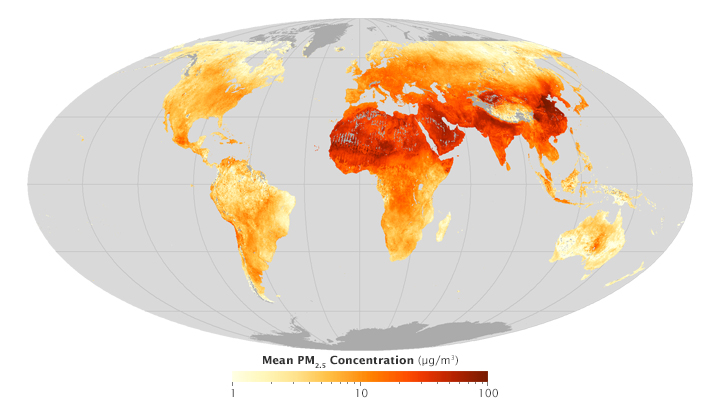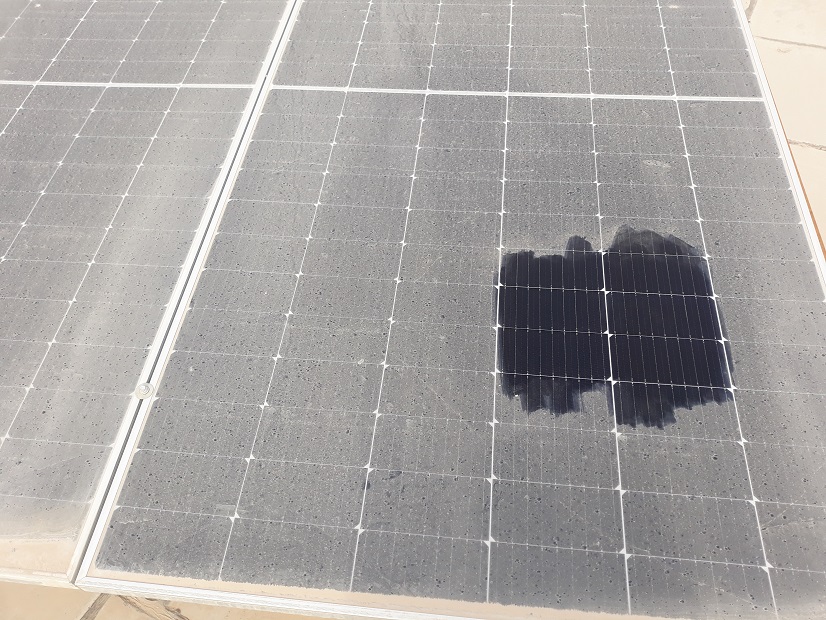Climate change has increased desertification, which has resulted in the spread of dust and sand particles that negatively affect solar panel efficiency. Solar photovoltaic modules can be affected significantly by dust deposition, affecting their efficiency and performance. Using water-based cleaning methods, however, can be costly and harmful to the environment. Through this project, which extends for a number of years, we are looking for innovative, effective, economical, and sustainable methods that do not depend on water resources for cleaning solar panels. Electrostatic technologies are primarily tested in this project to repel dust particles from the surface of solar panels using electrical charges. Electric charges are created on the panel surface, repelling dust particles and causing them to fall off. In addition to removing dust from solar panels, this method also reduces the need for water-based cleaners.
- Climate change
- Desertification
- Dust
- Solar modules
- Power loss
- Cleaning solar panels
1. Climate Change and Desertification
Climate change has led to an increase in desertification, which has resulted in the spread of dust and sand across various regions of the world (Figure 1) [1]. This increase in dust and sand particles has negatively impacted solar panels, as the accumulation of dust reduces the efficiency of solar panels in converting sunlight into electricity [2]. Dust deposition on the surface of solar panels creates a layer that obstructs the sunlight and reduces the efficiency of solar panels. This phenomenon is known as soiling, and it can cause a significant loss in the power output of solar panels. The severity of soiling depends on several factors such as the location of the solar panels, the type of dust, and the frequency of cleaning (Figure 2). In regions where water is scarce, the conventional method of cleaning solar panels with water may not be feasible. Therefore, alternative methods are required to remove dust from solar panels effectively. The development of innovative and sustainable methods for removing dust from solar panels has become a crucial area of research for many scientists and engineers [3].

Figure 1. The concentration of the dust and particulate matter (PM2.5).

Figure 2. A thick layer of dust on the solar modules.
2. Solar Photovoltaic Modules and Dust
Solar photovoltaic (PV) technology has become increasingly popular over the years, as a source of renewable energy that is clean, reliable, and sustainable [4]. However, the efficiency of solar PV modules can be significantly reduced by dust deposition on the surface of the panels, which can lead to power losses of up to 20%. In this project, we will examine the effects of dust deposition on solar PV modules and explore the possibility of removing the dust without using water. However, there are many methods that can be used for cleaning solar panels. Still, we seek innovative, effective, economical, and sustainable methods that do not depend on water resources for cleaning solar panels (Figure 3).


Figure 3. Cleaning methods for solar panels.
3.
The Effect of Dust Deposition on Power Loss in Solar PV Modules
Dust deposition on the surface of solar PV modules can significantly reduce their efficiency by blocking sunlight and reducing the amount of energy that can be converted into electricity [5]. According to research, dust deposition on solar panels can cause a reduction in energy production by up to 20%, depending on the location and severity of the dust deposition. This can have a significant impact on the performance of solar PV systems, especially in arid and dusty regions where dust deposition is more severe [6].
4. Removing Dust on Solar Panels without Using Water
One of the main challenges of cleaning solar PV panels is that the use of water can be both expensive and harmful to the environment. In addition, the use of water can also lead to potential damage to the solar panel's components, such as junction boxes, inverters, and other electronic components. In recent years, there has been increasing interest in developing alternative methods for removing dust from solar PV panels without using water. One of the methods being explored is the use of air-based cleaning technologies, such as brushes, sponges, and other non-abrasive cleaning tools. These tools can be attached to robotic systems that can move across the surface of the solar panels, cleaning them without the need for water. Another approach being explored is the use of electrostatic technologies, which use electrical charges to repel dust particles from the surface of the solar panels [7]. These systems work by creating an electrical charge on the surface of the panel, which repels the dust particles, causing them to fall off the surface [8]. This method is not only effective in removing dust from solar panels but also reduces the need for water-based cleaning methods [9]. Another approach, dry cleaning pads are non-abrasive cleaning tools that can be used to remove dust from solar panels. They are made of microfiber material that attracts dust particles and removes them from the surface of solar panels. Another approach, vibrating cleaners use high-frequency vibrations to loosen and remove dust particles from the surface of solar panels. These cleaners can be attached to robotic systems or handheld devices. One possible solution to the problem of dust accumulation on solar panels is the use of self-cleaning surfaces. Self-cleaning coatings that prevent dust and sand particles from sticking to the surface of solar panels. These coatings use nanostructures that create a water-repellent surface, allowing dust to be removed naturally through rainfall or wind. Nano coatings are ultra-thin layers of protective material that can be applied to the surface of solar panels. They can repel dust particles, preventing them from sticking to the surface of solar panels. This method is effective in reducing the need for frequent cleaning of solar panels. Another possible solution is the use of automated cleaning systems. These systems use robotic cleaners that move across the surface of solar panels and remove dust using non-abrasive tools. These automated systems can operate without water, reducing the environmental impact of cleaning solar panels.
5.
Conclusion
The increase in desertification caused by climate change has led to the spread of dust and sand particles, negatively impacting the efficiency of solar panels. However, by developing innovative and sustainable methods for removing dust from solar panels, we can improve the efficiency of solar panels and reduce our dependence on non-renewable sources of energy. Dust deposition on solar PV modules can have a significant impact on the efficiency and performance of solar PV systems. However, the use of water-based cleaning methods can be both expensive and harmful to the environment. Alternative methods, such as air-based cleaning technologies and electrostatic technologies, are being explored as possible solutions to remove dust from solar panels without using water. By studying the effects of dust deposition on solar PV modules and exploring new methods for removing the dust, we can improve the efficiency and sustainability of solar PV technology, making it an even more attractive option for clean and renewable energy production. There are several methods available to remove dust from solar installation panels without using water. By using non-abrasive tools, robotic systems, and nano coatings, we can effectively remove dust from solar panels while reducing the environmental impact of water-based cleaning methods. In this project, our research is primarily focused on the use of electrostatic technologies, which use electrical charges to repel dust particles from the surface of the solar panels. These systems work by creating an electrical charge on the surface of the panel, which repels the dust particles, causing them to fall off the surface. This method is not only effective in removing dust from solar panels but also reduces the need for water-based cleaning methods. As part of this project, which will continue for a number of years, we hope to develop innovative, efficient, economical, and sustainable methods that do not rely on water resources to clean solar panels.
References
- Aaron van Donkelaar, Randall V. Martin, Michael Brauer, N. Christina Hsu, Ralph A. Kahn, Robert C. Levy, Alexei Lyapustin, Andrew M. Sayer, and David M. Winker. Global Estimates of Fine Particulate Matter using a Combined Geophysical-Statistical Method with Information from Satellites, Models, and Monitors. Environmental Science & Technology 2016 50 (7), 3762-3772.
- M. Mani, R. Pillai, Impact of dust on solar photovoltaic (PV) performance: Research status, challenges and recommendations. Renew. Sustain. Energy Rev. 14, 3124–3131 (2010).
- R. R. Cordero, A. Damiani, D. Laroze, S. MacDonell, J. Jorquera, E. Sepúlveda, S. Feron, P. Llanillo, F. Labbe, J. Carrasco, J. Ferrer, G. Torres, Effects of soiling on photovoltaic (PV) modules in the Atacama Desert. Sci. Rep. 8, 13943 (2018).
- B. S. Yilbas, H. Ali, M. M. Khaled, N. Al-Aqeeli, N. Abu-Dheir, K. K. Varanasi, Influence of dust and mud on the optical, chemical, and mechanical properties of a PV protective glass. Sci. Rep. 5, 15833 (2015).
- T. Sarver, A. Al-Qaraghuli, L. L. Kazmerski, A comprehensive review of the impact of dust on the use of solar energy: History, investigations, results, literature, and mitigation approaches. Renew. Sustain. Energy Rev. 22, 698–733 (2013).
- M. R. Maghami, H. Hizam, C. Gomes, M. A. Radzi, M. I. Rezadad, S. Hajighorbani, Power loss due to soiling on solar panel: A review. Renew. Sustain. Energy Rev. 59, 1307–1316 (2016).
- Panat, Sreedath, and Kripa K. Varanasi. "Electrostatic dust removal using adsorbed moisture–assisted charge induction for sustainable operation of solar panels." Science Advances, (2022). https://doi.org/abm0078.
- H. Kawamoto, T. Shibata, Electrostatic cleaning system for removal of sand from solar panels. J. Electrostat. 73, 65–70 (2015).
- H. Kawamoto, Electrostatic cleaning equipment for dust removal from soiled solarpanels. J. Electrostat. 98, 11–16 (2019).
